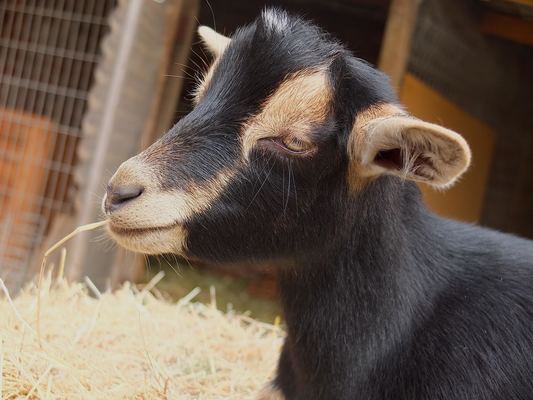By Rebecca Skilton
Prior to 2012, the Nigerian dwarf goat was a breed unknown to Australia. Now, four years on, Michael Garwood and his miniature dairy goats are preparing to appear at the 2017 Berwick Show.
“We were the first people to import Nigerian dwarf goats (to Australia),” Michael said. “(My wife) got tired of having to buy various cheeses and thought she’d try and make it herself. She decided on a goat because a cow would be too big. She researched it and found out about the Nigerian dwarf goats and said, that’s what I want!”
Native to West Africa, the Nigerian dwarf goat has risen in popularity due to its small size, colourful markings, easy temperament and dairy characteristics. With males generally standing under 60cm high, females are slightly smaller at 57cm, and can produce up to 1.8 litres of milk per day.
“The Nigerian dwarf goat’s milk is one of the highest in butterfat,” explained Michael. “They are the preferred dairy goat for specialised cheese makers in America. They refer to (the goats) as their secret weapon!”
However, before the efforts of the Garwoods, Australia was yet to experience home grown Nigerian dwarf goat milk.
“There were (no Nigerian dwarf goats) in Australia or New Zealand, so we thought maybe we could import them. I contacted the department of agriculture and they said you can’t import them due to diseases, but you can bring in frozen embryos,” explained Michael. “There have been problems along the way with embryo success, but we have now crossed a threshold and have a sufficient number of breedable females. This year our breeding program should kick off.”
The 2017 Berwick Show will feature an extensive display of dairy goats, with five of the 58 classes dedicated solely to the Nigerian dairy goat breed.
“They’re very cute … and usually a real hit with kids and young families,” said show president, Willem Boon. “People should definitely seek them out on the Sunday.”
Despite their small size, the preparations and criteria to show a successful dairy goat is just as substantial as any other livestock exhibit throughout the showgrounds.
“For our project the first thing is to get (the goats) to walk on the lead,” Michael explained. “We have a couple of weeks to get them so they follow along. We’ll also trim their fur, and make sure their hooves are trimmed properly.”
Dairy Goat judge Muray Mills will also have a busy day, as he endeavours to select the best goat in each field. Depending on the class, Mr Mills will be searching for a variety of characteristics, ranging from features such as the carriage and smoothness of the goats walk, their overall angularity of the goat, and most importantly, their dairy characteristics.
“Because (the goats) are shown as dairy goats – the important thing is about milk production,” said Michael. “So we will only show the does, and not the bucks.”
With so few Nigerian darf gats in Australia, Michael admits that for most of the classes his goats will be competing against one another, with a small number of cross breeds possibly entered.
“There are a number of people who are cross breeding,” said Michael. “They use frozen semen straw and breed them with standard dairy goats … we have the only purebreds, though.”
When out in show, spectators will be able to identify goats belonging to the Garwoods by their stud name, First Fleet.
“We were looking for (a stud name) that would sound Australian, but would have reference that we were the first to import (the goats),” Michael said. “So we thought, why not First Fleet Nigerian dwarf goats? … That was back in 2012, and now we have 17 little goats!”







